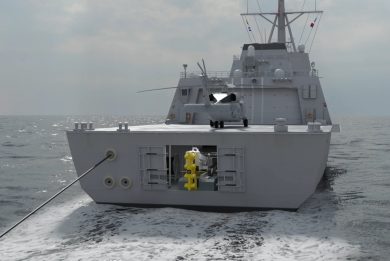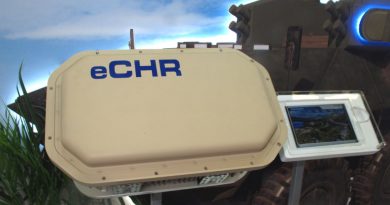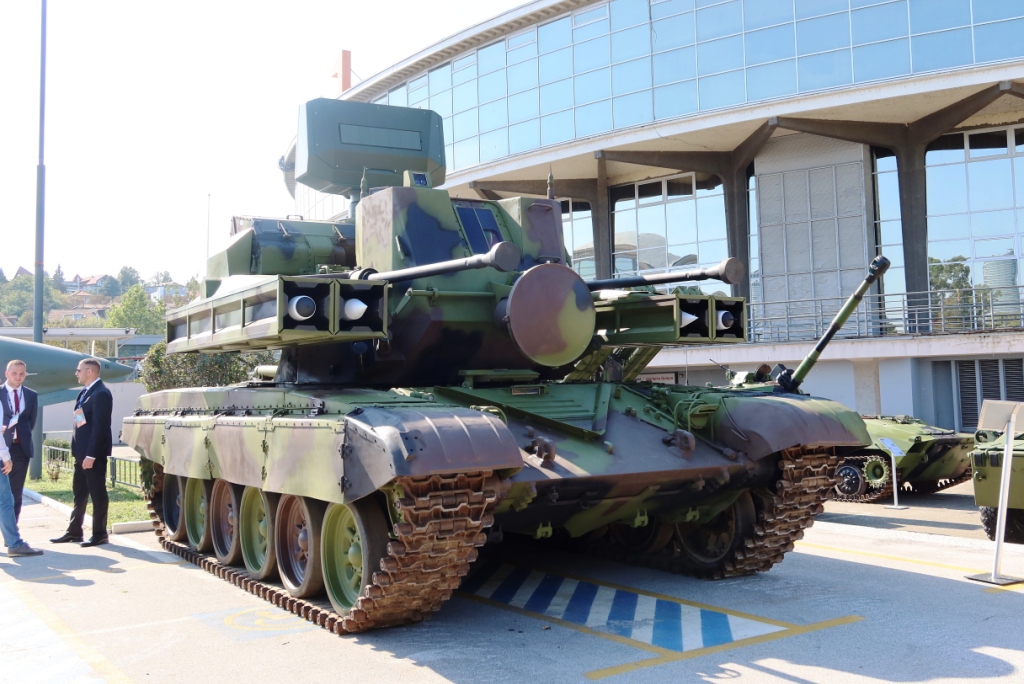
Partner 2023 – Serbia aims at enhancing its ground-based air defence (GBAD)
At Partner 2023 Serbia Military Technology Institute (MTI) exhibited a number of new ground based air defence (GBAD) systems mostly aimed at self-propelled systems capable to provide a defensive umbrella over manoeuvre units
Tracked and wheeled based GBAD prototypes were visible at the Belgrade exhibition, threats from the third dimension, either manned or unmanned, becoming increasingly dangerous for land formations, both when on the move, in convoys, as well as when deployed on the terrain in combat posture.
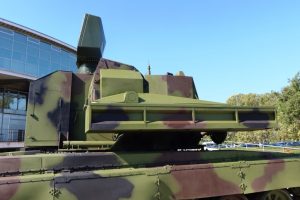
Staring from the heavy side, outside the main exhibition hall the Serbian Army exhibited the HARPAS, based on an M-84 tank chassis. The turret is armed with two 40 /70 mm Bofors automatic cannons with a total of 200 munitions available. These can be of the HE type, however EDR On-Line understood that MTI is developing a pre-fragmented round with proximity fuse to cope with missiles and lightly protected airframes. The guns have a 3.7 km effective range according to MTI sources.
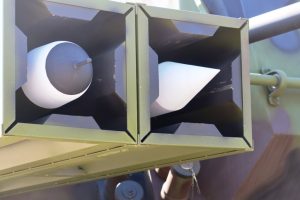
Foe engaging targets at greater ranges, up to 12 km, two twin missile launchers are installed right and left of the turret. On each side we find two newly developed RLN missiles, one radar guided and one IR guided, both having an effective range of 12 km and an 8 km ceiling. Both missile have a 170 mm diameter and are fitted with the same two-stage solid rocket motor. The RLN-TK is the one fitted with a thermal imaging seeker and with a laser/proximity contact fuse. The mass at launch is 100 kg of which 11 kg represent the warhead. The RLN-TK is 2,955 mm long, slightly shorter than its radar-guided counterpart, the RLN-RF which is 3,050 mm long. All other dimensions and weight are the same, the seeker being here a semi-active radar homing one, the fuse also remaining common to the two missiles.
While the RLN-TK has already undergone live firing trials, the RLN-RF is still in development; according to MTI sources the radar seeker provided good results in static tests and proved to be fully compatible with the illuminator radar. Firing of the latter missiles are expected “soon”, EDR On-Line was told at the Belgrade exhibition.
MTI sources defined the search radar as a Thales GS-40, the HARPAS brochure indicating an instrumented detection range short of 120 km and an instrumented detection ceiling less than 20,000 metres. This X-band radar should be a militarised version of the Xenta-M frequency modulated continuous wave radar developed for civil purposes by Weibel of Denmark. Which model or how much this was modified to suite Serbian requirements remains questionable, data provided at Partner not corresponding with those available from the companies. A tracking radar with the typical round dish is located at the front of the turret, the surveillance radar being fitted on the top, which allows full 360° coverage. The 40 mm Bofors gun tracking and aiming is provided by a day/night optronic system. The HARPAS is currently at prototype level, no information being available on acquisition plans by the Serbian Army, which looks at this system to ensure defence against air threats for its armoured formations.
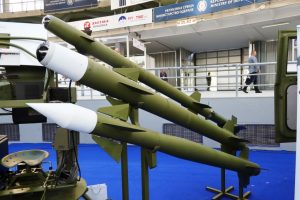
Remaining in the short-range arena, beside the HARPAS we could see the SA-10M; this tracked system has been fitted with new launch canisters able to contain the RLN-S10 missile, developed by MTI on the basis of the SA-10 munition of Russian origin. A booster was added to increase range of the original missile from 5 to 10 km, while targets can now be engaged up to 5,000 metres, compared to the 3,500 metres of the original missile. The RLN-S10 is 2,950 mm long, has a 120 mm diameter, a mass at launch of 65 kg of which 3 kg represent the warhead. It maintains the original dual-mode photo contrast/infrared seeker as well as the contact/proximity fuse. Several live firing of this missile were performed successfully.
While these two systems were exhibited in the outdoor area, inside the main hall we could find the PASARS, another self-propelled system, this time on wheels, which falls in the very-short range air defence (VSHORAD) category. It is intended not only to cope with conventional targets, but also to defeat UAVs, which are becoming an increasing threat on the battlefield.
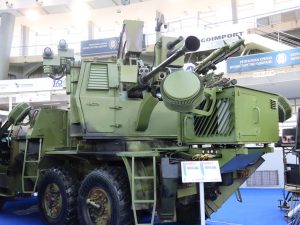
The key element is the turret, which is fitted on top a FAP 2228 off-road 6×6 vehicle; the truck chassis has been fitted with an armoured cabin at the front, the flatbed at the rear carrying the GBAD turret. This features in the centre a single Bofors 40 mm cannon, while on the right we find a twin launcher for Mistral 3+ missiles provided by MBDA. These can reach a target at over 7.5 km range and 6 km altitude. On the left side another twin launcher hosts side by side two Strela.2M or Strela-2MA missiles. The latter is an improved version of the former, which maintains the range and altitude envelope, 4.2 km and 2.3 km respectively, minimum distances being 500 and 5 metres, but is fitted with a new dual-mode photo contrast/infrared seeker as well as the contact/proximity fuse.
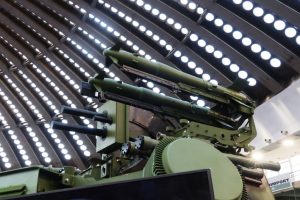
Although its key role remains air defence, the PASARS can also take action against enemy armoured vehicles. On the same side of the Strela missiles but in a higher position a twin launcher for the newly developed Malyutka 2T5, with tandem warhead and a 5 km range is fitted.
As said, UAVs are becoming a major threat. The PASARS is fitted with a jammer covering the 400 – 6,000 MHz band, which directional antenna is visible at the front, coaxially mounted with the 40 mm cannon.
Target detection is the responsibility of four RPS-42 radars, each covering 90° in azimuth and 80° in elevation, installed at the lower corners of the turret. Produced by Rada of Israel, these sensors can pick up targets up to 30 km distance and from 10 to 10,000 metres altitude. The achievable detection range against Nano UAVs is 3.5 km. The optronic suite includes a day channel and a night channel based on Sagem Electronics & Defense SATIS GS advanced multipurpose cooled thermal imager operating in the 3-5μm waveband and featuring a VGA/HD detector. When operating the cannon the firing control system constantly recalculates the impact point in order to feed the airburst round with the precise time to detonation, in order to maximise the terminal effect on the target.
Air defence missiles have been tested, the Strela-2MA is already in service, while antitank missiles are awaiting trials. The PASARS, which is currently at prototype level, should soon start trials as a system, before qualification and potential acquisition by the Serbian Army, which is looking at this system to provide air defence over its medium and light formations.
Photos by P. Valpolini

